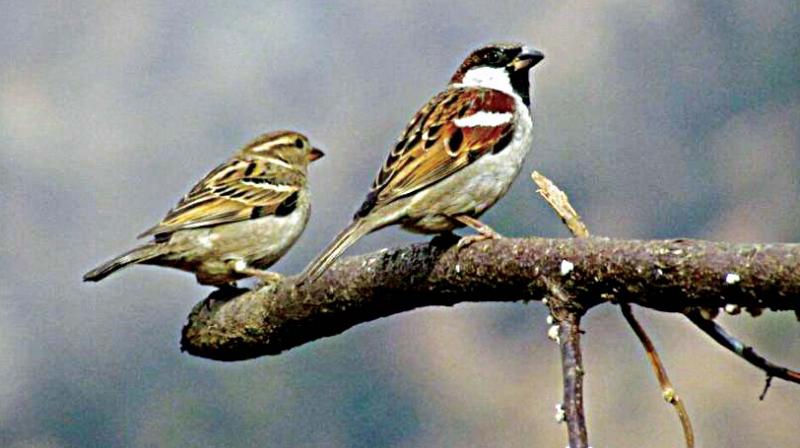Bengaluru: Reasons many, but sparrows have stopped chirping
The common sparrow enjoys a special status in our households.

Bengaluru: "In this world of ours, the sparrow must live like a hawk if he is to fly at all,” said Hayao Miyazaki, a Japanese filmmaker. He was obviously referring to the difficulties the common sparrow has in a ruthless world.
The common sparrow enjoys a special status in our households. Their constant chirping is a reminder of the beauty of nature around us. Now only found in a few spaces around Bengaluru, such as the Kempegowda International Airport, the common sparrow has more or less disappeared from the landscape of Namma City.
Seen in abundance during the 1970s and the 1980s, sparrow numbers have dwindled over the years. Mr Harish R. Bhat of the Energy and Wetlands Research Group (EWRG) said there are three reasons for the dwindling numbers of sparrows in the city.
 The government has failed to establish a full-fledged monitoring system for all kinds of wildlife, not just birds. Dr M.B. Krishna, ornithologist
The government has failed to establish a full-fledged monitoring system for all kinds of wildlife, not just birds. Dr M.B. Krishna, ornithologist
“The main reason is the loss of habitat. Earlier, houses had tiled roofs which had crevices. These crevices were important as sparrows build their nests there. With a change in architecture, sparrows have lost their habitats,” he said.
Another reason, according to Mr Bhat, is the loss of greenery, combined with continuous pesticide spaying, which has resulted in lesser number of caterpillars. “Caterpillars are very important as they are the main food source for the sparrow fledglings. With the continuous use of pesticide and loss of green cover, caterpillars are becoming less in number affecting sparrows’ food cycle.”
A third reason is the shortage of grains. The ecologist insists that there are spaces where the sparrow can still be found, though in lesser numbers. “There are still places like Malleswaram in old Bengaluru and also market spaces with ‘mandis’ which sparrows still frequent. Also sparrows are trying to adjust in other spaces such as the Kempegowda International Airport and Yeshwanthpur,” he said.
Dr M.B. Krishna, a well-known ornithologist, said, “The government has failed to establish a full-fledged monitoring system for all kinds of wildlife, not just birds. Also, pigeons and sparrows are not in competition. Pigeons are ledge nesters and have moved in to occupy space left by sparrows as the city’s architecture is not conducive for them.”
Bird watcher Ulhas P. Anand concurred. “Who would have imagined pigeons in Bengaluru? We only associated Mumbai and Delhi as cities where pigeons flourished. As the city moves towards vertical buildings which mimic small hillocks, sparrows find it difficult to nest as they can no longer find crevices and small holes,” he said.The bird experts also agreed that the lack of shrubbery is another reason the sparrow has nearly disappeared.
